Pictures of White Spots on Tongue
Medically reviewed by Brian T. Luong, DMD
White patches or spots on the tongue can be caused by various reasons. They may be from a sore created by biting the tongue or from an underlying condition like thrush. These spots can occur on any surface of the tongue, feel sore, and make it difficult to eat or drink.
Read on to learn more about white spots on the tongue, what they look like, and when to see a healthcare provider.
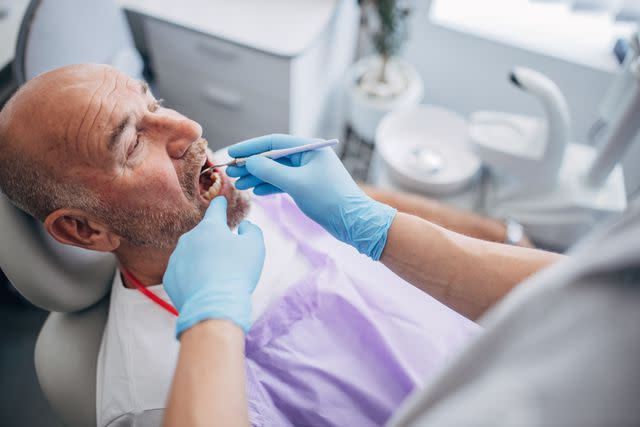
South_agency / Getty Images
Causes and Pictures of White Spots on Tongue
White spots on the tongue may be from an infection, illness, or another cause. Explore what these spots look like and identifies the underlying illness or cause.
Geographic Tongue
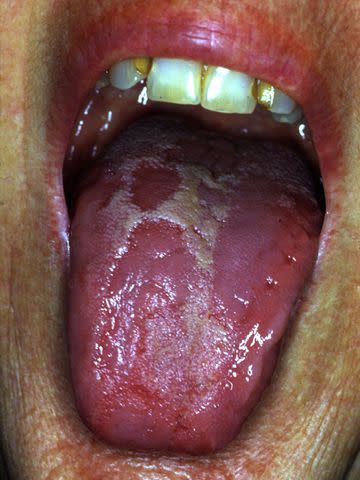
Reproduced with permission from © DermNet dermnetnz.org 2023
Geographic tongue is an inflammatory tongue condition also known as benign migratory glossitis. It is due to the loss of the papilla (the tiny white bumps that cover the tongue). The condition causes reddened, smooth areas on the tongue surrounded by white, irregular borders. It may cause burning or stinging when eating or drinking certain foods and beverages.
Hairy Leukoplakia
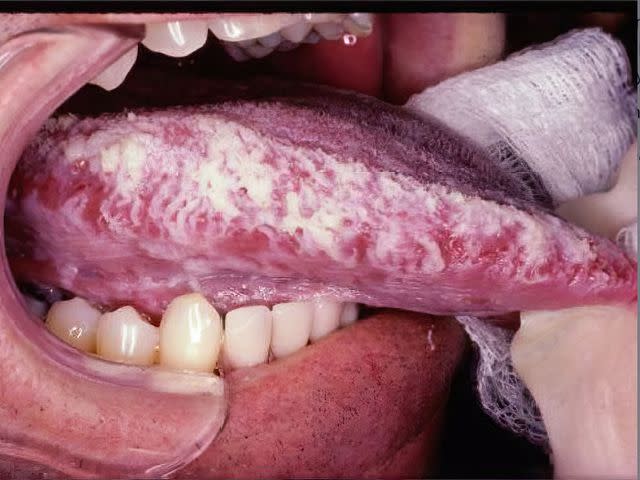
Reproduced with permission from © DermNet and © Professor Deborah Greenspan dermnetnz.org 2023
Hairy leukoplakia is most commonly seen in people with weakened immune systems, primarily people with HIV. It is caused by the Ebstein-Barr virus (EBV) and appears as white, hairy patches on the tongue. Hairy leukoplakia can also occur in other areas of the mouth besides the tongue.
Oral Lichen Planus
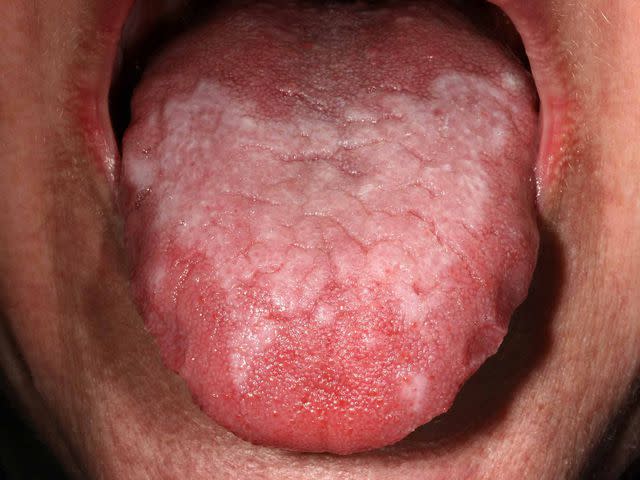
Reproduced with permission from © DermNet and © Raimo Suhonen dermnetnz.org 2023
Oral lichen planus is a condition that causes white, lacey patches in the tongue or any area in the mouth. It may cause no other symptoms or may be painful with sores and redness.
Syphilis on Tongue
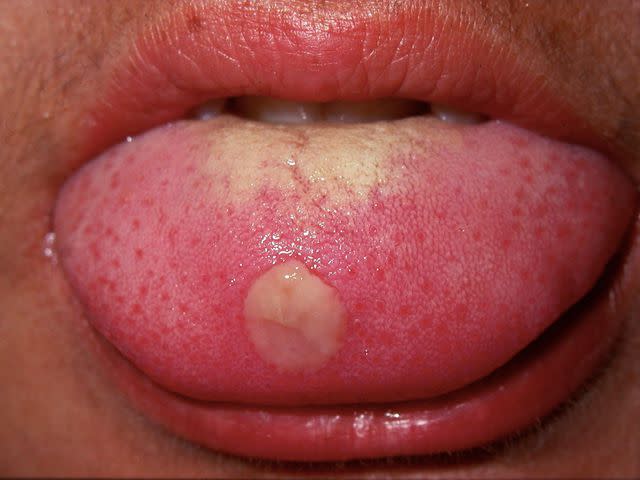
Reproduced with permission from © DermNet dermnetnz.org 2023
Syphilis is a common sexually transmitted infection (STI). It can cause sores called chancres. These may be present in the mouth. As the condition progresses it develops white patches in the mouth and tongue.
Oral Thrush
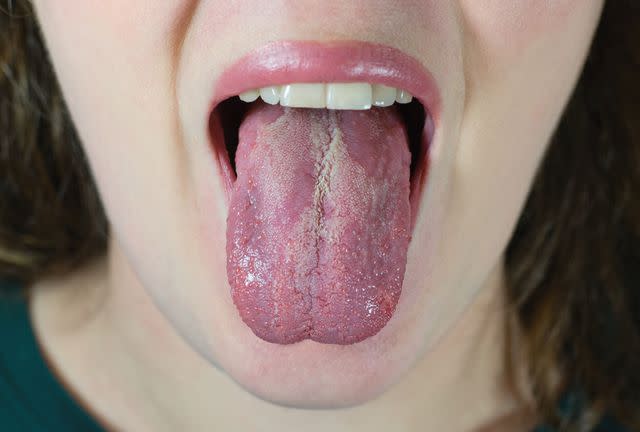
Tunatura / Getty Images
Thrush is an infection in the mouth caused by overgrowth of a fungus called Candida. It causes white areas in the mouth and tongue that bleed when brushed or scraped.
Canker Sore
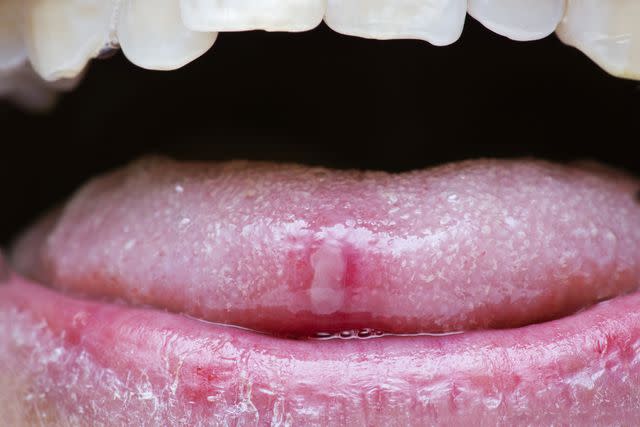
4kodiak / Getty Images
A canker sore is a small ulcer, or sore, in the mouth or on the tongue. It typically appears as a small white spot surrounded by redness. It can be caused by biting, stress, or certain foods, or the cause may be unknown.
Leukoplakia
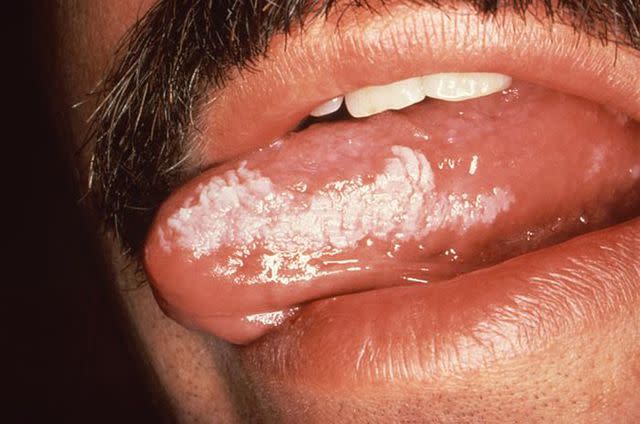
Public Domain Image
Leukoplakia is a white spot or patch in the oral cavity and can occur on the tongue. This spot or patch is not easily scraped off. It can be a precancerous condition and may progress to cancer. Your risks are increased if you smoke, use smokeless tobacco, or use alcohol heavily.
White Spots, Patches, and Bumps: Key Differences
When someone has a white spot, patch, or bump on their tongue or mouth, it is important to note the characteristics and other symptoms seen and felt with these changes.
White areas may be localized, only in one small spot, or can cover large areas of the tongue or mouth. It may also have open sores that cause pain, tenderness, or stinging.
The underlying condition causing the symptoms will mark the key differences between what people see or experience.
Can You Remove White Spots on Tongue at Home?
Tongue scrapers and toothbrushes are often used to remove white coatings of food debris and bacteria from the tongue. A 2022 study found that tongue scrapers were just as effective as toothbrushes in improving mouth odor and removing white tongue coatings.
Anyone living with a medical condition, like the ones listed above, that is causing white patches, spots, or bumps should not attempt to remove them at home. These changes in the mouth are due to an underlying medical condition that needs to be treated by a healthcare provider, and removing the spots may cause additional injury.
When to See a Dentist
A dentist can evaluate white spots on the tongue and mouth and develop a treatment plan personalized to your needs.
You should see a dentist if you have any white spots, patches, or bumps in your mouth or tongue that do not go away or worsen. If you're experiencing any of the below symptoms along with white areas in your mouth, you should contact your healthcare provider:
Chills
Difficulty swallowing
Redness or swelling
Pus
Summary
White spots on the tongue are signs that there may be an underlying infection or illness. It also may be from an injury to the tongue. If these spots do not go away or are accompanied by other symptoms like a fever or chills, contact a healthcare provider.
Read the original article on Verywell Health.

